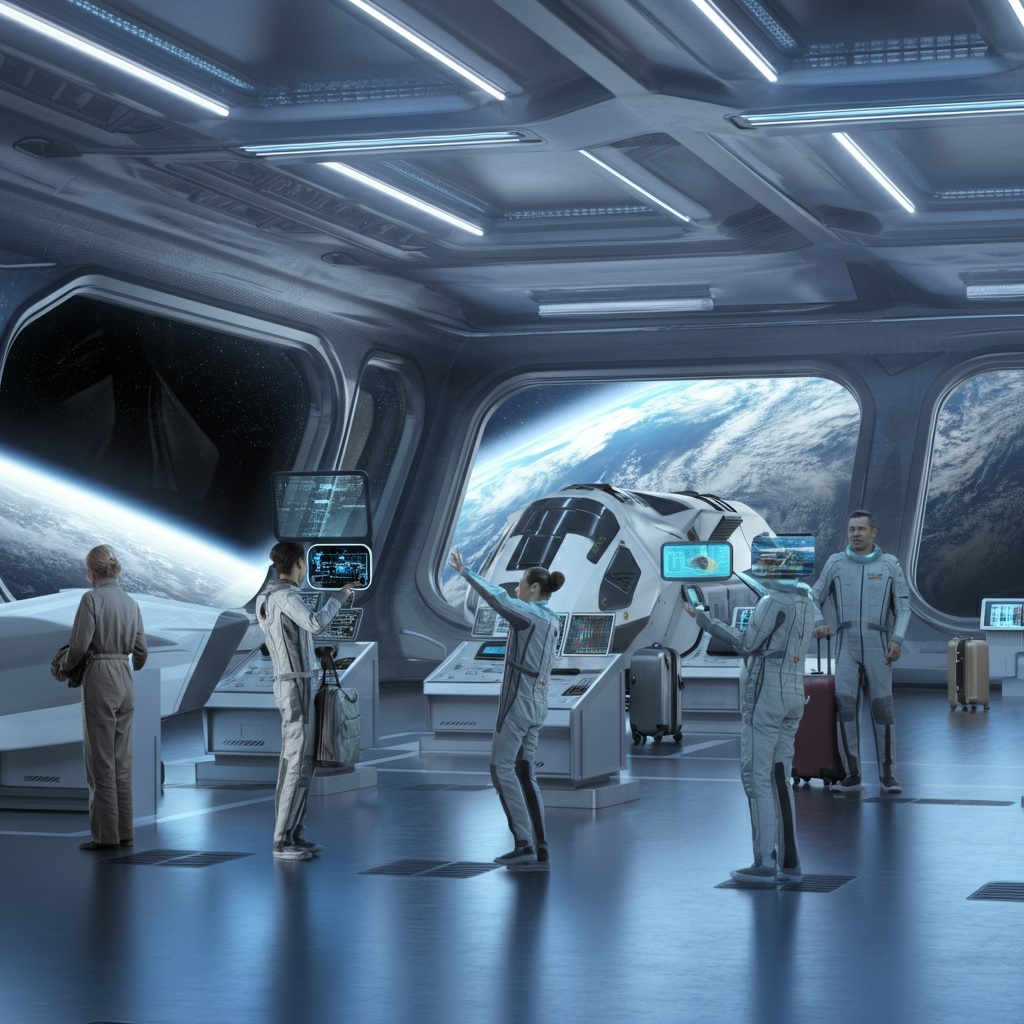Space has always been the final frontier, a destination once reserved for astronauts and the visionaries of science fiction. But today, what once seemed an unattainable dream is rapidly becoming a tangible reality. Space tourism, the idea of everyday people experiencing the cosmos, is no longer a concept relegated to Hollywood movies. Instead, it’s an industry in its infancy, poised to transform how humanity interacts with the universe.
This blog explores the driving forces behind space tourism, key players making this dream possible, the emerging technology powering these breakthroughs, and what the future holds for those eager to reach for the stars.
The Rise of Space Tourism
The emergence of space tourism stems from human curiosity and advances in technology. Over the past few decades, we’ve witnessed an exponential decrease in the cost of space launches, thanks to innovative companies like SpaceX and Blue Origin. What was once a multi-billion-dollar endeavor is now becoming accessible to high-net-worth individuals and eventually, potentially, the general public.
A Brief History of Space Tourism
The concept of space tourism began taking shape in the early 2000s when millionaire Dennis Tito became the first private citizen to visit the International Space Station (ISS). His historic trip, made possible by the Russian space agency, cost him a hefty $20 million. While this was a monumental achievement, space tourism remained out of reach due to its astronomical costs.
However, the landscape started to evolve with the rise of private companies in the early 2010s. SpaceX, founded by Elon Musk in 2002, began prioritizing the development of reusable rockets to make space travel more economical. Companies like Blue Origin (led by Jeff Bezos) and Virgin Galactic (founded by Richard Branson) soon joined the race, with visions of democratizing access to space.
The Key Players Shaping the Space Tourism Industry
The companies at the forefront of space tourism are more than just high-tech startups; they are trailblazers reshaping our relationship with space.
- Virgin Galactic: This company has pioneered suborbital spaceflights, offering passengers a brief but breathtaking experience of weightlessness and an unmatched view of Earth from above. Virgin Galactic successfully completed its first fully crewed spaceflight in 2021, bringing Richard Branson himself into orbit.
- SpaceX: Renowned for its reusable Falcon 9 rockets, SpaceX has taken significant strides in both cargo and crewed missions. Its Crew Dragon spacecraft transported private citizens on the Inspiration4 mission, marking an important step toward long-term space tourism.
- Blue Origin: With its New Shepard rocket, Blue Origin specializes in short, suborbital flights providing passengers a few minutes of weightlessness and panoramic views of Earth. Notably, Jeff Bezos was part of one of its inaugural flights.
The Technology Behind Space Tourism
Sending people into space safely is no small feat. The rapid progress in cutting-edge technology has made space tourism feasible, propelling us toward a new era in travel.
Reusable Rockets
The traditional approach to space travel relied on disposable rockets, which made each launch enormously expensive. However, reusable rockets, such as SpaceX’s Falcon 9 and Blue Origin’s New Shepard, have changed the game. By reusing components repeatedly, these companies have dramatically reduced the cost of space travel.
Suborbital and Orbital Flights
There are two main types of space tourist experiences:
- Suborbital Flights – These reach the edge of space, approximately 60 miles above Earth, offering passengers a few minutes of weightlessness. Virgin Galactic and Blue Origin focus on this area.
- Orbital Flights – These are much more complex and allow travelers to orbit Earth, similar to traditional astronaut missions. SpaceX is leading the charge here, offering experiences that can last multiple days at altitudes of over 250 miles.
Training and Safety Innovations
Preparing civilians for space travel involves more than just excitement; it requires rigorous training. Space tourism companies integrate advanced simulators, zero-gravity flight practice, and emergency drills to ensure passengers are equipped for the experience. Additionally, materials engineering and AI have contributed to spacecraft structures that maximize safety.
The Benefits and Challenges of Space Tourism
While space tourism is thrilling, it comes with both incredible opportunities and significant hurdles.
Benefits of Space Tourism
- Scientific Advancements: Space tourism investments drive innovation in fields like propulsion, materials science, and life support systems, strengthening the aerospace industry as a whole.
- Environmental Awareness: Seeing Earth from space, also known as the “Overview Effect,” can profoundly impact people’s perspectives, fostering a deeper appreciation for environmental conservation.
- Economic Growth: The space tourism industry is expected to inject billions into the global economy, creating jobs and fostering technological research.
Challenges
- Environmental Impact: Rocket launches have been criticized for their carbon footprint, prompting companies to explore greener alternatives like biofuels and reusable technologies.
- Cost Barrier: Current price points make space tourism accessible only to the ultra-wealthy. Democratizing access will require further cost reductions and advancements.
- Safety Concerns: Space travel inherently carries risks. Strict regulation and continual advancements in safety measures will be essential.
What the Future Holds for Space Tourism
While space tourism is currently in its infancy, the future looks bright. Analysts predict that as technology advances and costs decrease, space travel could become as routine as international flights are today. Companies envision sustainable, long-term operations such as:
- Space Hotels: Orbital hotels like modules attached to the ISS are being planned by companies such as Axiom Space.
- Extended Space Missions: Longer stays in orbit, complete with activities and experiments, could become an option for adventurous travelers.
- Spaceports Around the World: Infrastructure developments are underway to support a greater number of launches, heralding a future where spaceports may become as common as airports.
Read More👉 Levitation Technology: Redefining Modern Science
Reach for the Stars
Space tourism is no longer a distant dream; it’s happening right now. With breakthroughs in technology, the dedication of innovative companies, and humanity’s relentless curiosity, the prospect of venturing beyond Earth’s atmosphere is closer than ever.
Whether you’re a die-hard space enthusiast or someone with a passing interest, there’s no denying that this blossoming industry is reshaping how we perceive travel and exploration.
Are you ready for your own space adventure? Keep an eye on companies like SpaceX, Blue Origin, and Virgin Galactic as they make this once-impossible dream a reality. Until then, enjoy the view from here.

